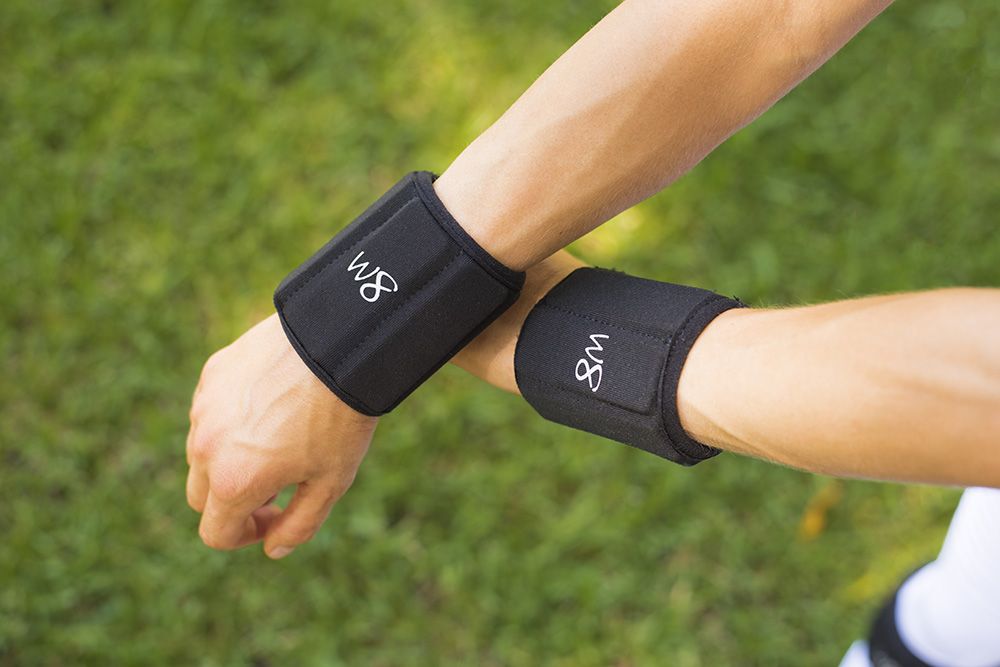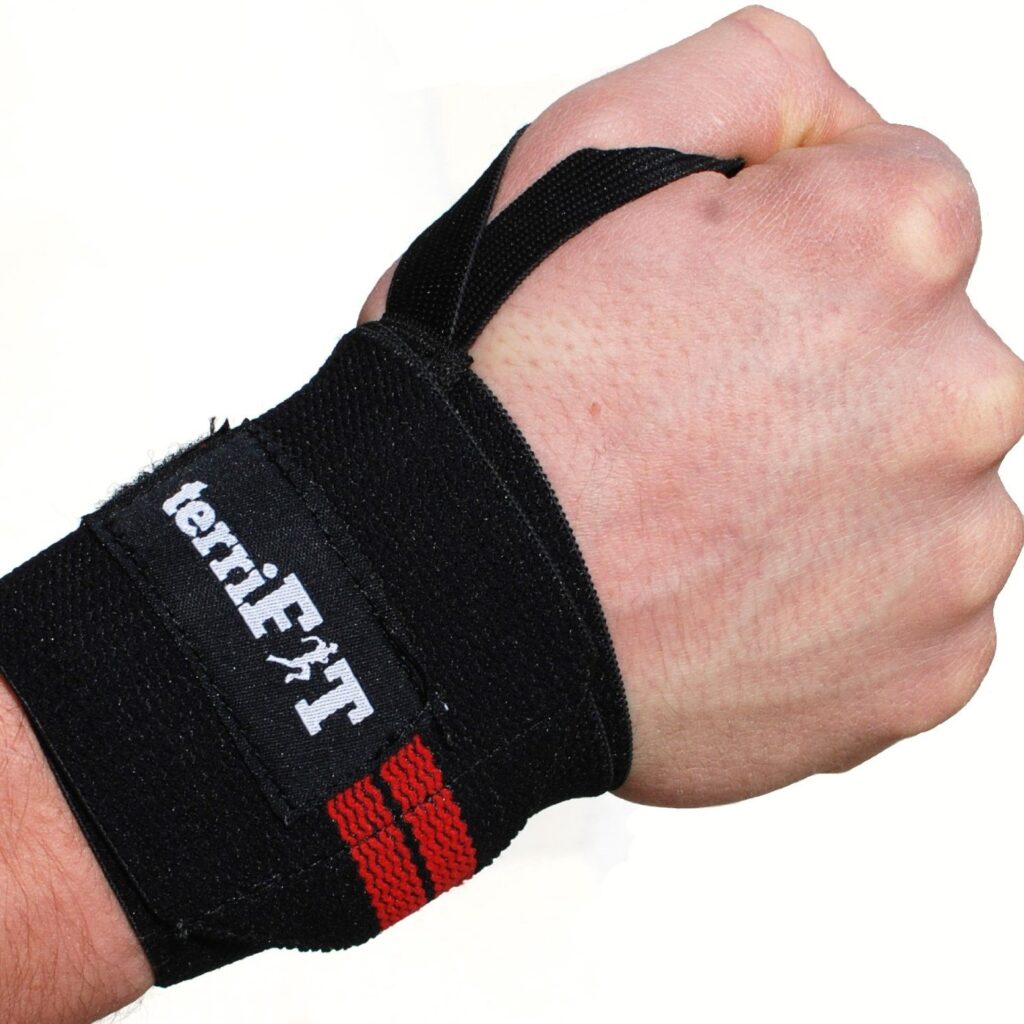Introduction
How To Train Wrist Strength: Wrist strength is often an overlooked aspect of physical fitness, yet it plays a crucial role in our daily lives and various activities. Whether you are an athlete aiming to improve your performance, a fitness enthusiast seeking better functional strength, or simply looking to enhance your overall well-being, training your wrist strength is a valuable endeavor.
The human wrist is a marvel of intricate design, comprised of a complex network of bones, ligaments, tendons, and muscles. It acts as a bridge between your hand and forearm, facilitating a wide range of movements that are essential for your everyday tasks. From gripping objects to typing on a keyboard, playing musical instruments to engaging in sports, our wrists are involved in almost everything we do. Hence, it’s vital to ensure they are strong, stable, and resilient.
Weak wrists can lead to various issues, such as carpal tunnel syndrome, tendinitis, and even reduced overall strength and performance in physical activities. Conversely, strong wrists can enhance your grip, stabilize your hand movements, and decrease the risk of injury. Whether your goal is to improve your athletic performance, enhance your day-to-day life, or simply prevent wrist-related discomfort, wrist strength training is the answer.

What do strong wrists do?
Wrist curls can help increase your grip strength by strengthening the muscles in your hands and forearms. A strong grip can also help prevent injuries, such as sprains and strains. Weak wrists can increase the risk of injuries, particularly in activities that involve repetitive movements or heavy lifting.
Enhanced Grip Strength: Strong wrists contribute to a firmer and more reliable grip, making it easier to hold onto objects, whether in day-to-day activities or sports and weightlifting.
Improved Sports Performance: In many sports, such as tennis, golf, basketball, and rock climbing, strong wrists are essential for better control, power, and accuracy in your movements.
Injury Prevention: Strong wrists are less prone to injury. They provide better stability and support, reducing the risk of sprains, strains, and fractures during various activities.
Better Functional Strength: Strong wrists allow you to perform daily tasks with ease, such as carrying groceries, opening jars, typing on a keyboard, and using hand tools.
Wrist Endurance: In activities like martial arts, wrestling, or boxing, strong wrists enable you to maintain power and control over extended periods, increasing your endurance and performance.
What causes weak wrists?
Hand weakness can stem from a variety of conditions, such as carpal tunnel syndrome, arthritis, peripheral neuropathy, and ganglion cysts. A weakened hand or grip can make everyday tasks much more difficult to complete.
Lack of Exercise: Sedentary lifestyles can lead to muscle atrophy and weakness in the wrist and hand muscles. If you don’t use these muscles regularly, they may become weaker over time.
Inadequate Strength Training: Failing to include wrist-specific strength training exercises in your fitness routine can result in weak wrists. If you neglect to target these muscles, they won’t develop the necessary strength.
Poor Ergonomics: Prolonged and repetitive activities that involve poor wrist positioning, such as using an improperly adjusted keyboard or mouse, can lead to wrist strain and weakness over time.
Overuse or Repetitive Strain: Engaging in activities that require repetitive wrist movements, like typing, playing musical instruments, or using hand tools, without adequate breaks or proper technique can lead to overuse injuries and weaken the wrists.
Do push ups increase wrist size?
Pushups make your triceps, front deltoid, and pectoral muscles bigger. They won’t have much effect on your wrists, forearms, or biceps. Pushups probably won’t provide that much stimulus for your arms, besides triceps. Bench press, on the other hand, can, provided you manage to load the bar.
Push-ups are a highly effective bodyweight exercise that primarily targets the chest, shoulders, and triceps. While they can help you build upper body strength and improve muscular endurance, it’s important to clarify that push-ups do not directly increase wrist size. Wrist size is primarily determined by genetics, bone structure, and the thickness of ligaments in the wrist joint, not muscle development.
During push-ups, the wrists play a vital role as stabilizers to support your body weight. As you lower and raise your body, your wrists are engaged to maintain proper alignment and balance. This action does contribute to strengthening the wrist joint and the muscles and ligaments surrounding it, which can lead to improved wrist stability and reduced risk of injury. However, this strengthening is more about function and stability rather than increasing the actual size of your wrists.
If you are interested in enhancing your wrist strength or grip, it’s advisable to incorporate wrist-specific exercises into your fitness routine. Wrist curls, wrist extensions, grip strengthening exercises, and forearm workouts can target the wrist and forearm muscles more directly, resulting in improved wrist strength and stability.
Does handgrip increase wrist size?
Hand grippers are primarily designed to improve grip strength, which is the ability to grip and hold objects firmly. While regular use of hand grippers can strengthen the muscles of the forearm, including those that control wrist movement, they do not directly increase the size of your wrist.
Handgrip exercises primarily target the muscles in your hands and forearms, particularly the flexor and extensor muscles that control finger and wrist movements. While these exercises can lead to increased hand and forearm strength and endurance, they do not significantly increase wrist size.
The size of your wrists is mainly determined by your genetics, bone structure, and the thickness of ligaments in the wrist joint. The wrist joint itself contains relatively few muscles, and the wrist’s actual size is not something that can be dramatically altered through exercise.
That said, handgrip exercises can indirectly contribute to wrist stability and support. As the muscles in your forearms and hands become stronger, they can help enhance the overall function and stability of your wrist joint. This increased stability may reduce the risk of wrist injuries and discomfort during activities that place stress on the wrists.
Do push ups strengthen wrists?
While push-ups of most varieties might not build much in terms of forearm size, they can actually build lots of strength in and around your wrist area. This is one reason why push ups tend to be popular in martial arts exercises, especially in boxing.
Wrist Stabilization: During a push-up, your wrists are involved in stabilizing your hands and wrists to support your body weight. This engagement of the wrist joint can gradually lead to improved wrist stability over time.
Improved Endurance: Repeatedly performing push-ups can enhance the endurance of your wrist and forearm muscles. This added endurance can be beneficial in various activities where you need to maintain strength and stability in your wrists over extended periods.
Balanced Muscle Development: While push-ups mainly target the pushing muscles (chest, shoulders, triceps), they also engage the pulling muscles, including the muscles of the forearm and wrist. This balanced muscle engagement can support overall upper body strength and wrist stability.
Do wrists get weaker with age?
Elderly: As ageing occurs, the body as a whole may begin to weaken due to inevitable wear and tear. The wrists can begin to weaken as a result of ageing from anywhere as young as 50, and this may progress rapidly or over time into such conditions as arthritis.
Muscular Atrophy: With advancing age, there is a tendency for muscle mass to decrease. This muscle atrophy can affect the muscles in the hands and wrists, leading to reduced strength and grip.
Reduced Bone Density: Aging can result in decreased bone density and increased susceptibility to conditions like osteoporosis, which can impact the strength and stability of the wrist joint.
Arthritis: Arthritis is a common age-related condition that can affect the joints, including the wrist. Arthritis leads to inflammation, pain, and joint damage, often resulting in reduced wrist strength and mobility.
Ligament and Tendon Changes: As we age, the ligaments and tendons that support the wrist joint may become less flexible and more prone to injury, which can contribute to a weakening of the wrists.
Are strong wrists genetic?
Handgrip strength is a heritable trait. Up to 65% of a person’s grip strength is determined by genes. Training and other developmental factors like nutrition determine the rest 35%.
Genetic Predisposition: Genetics can influence the baseline structure and potential for muscle and joint strength. Some individuals may have a genetic predisposition that allows for greater muscle development and overall strength in their wrists.
Muscle Fiber Types: Genetics can play a role in determining the distribution of muscle fiber types in your body. Fast-twitch muscle fibers, for example, are associated with greater strength and power, while slow-twitch fibers are more endurance-oriented. Genetic factors can influence the ratio of these fibers in your wrist muscles.
Bone Structure: The size and shape of your wrist bones are primarily determined by genetics. A larger bone structure may provide a more substantial foundation for muscle attachment and potential strength.
Connective Tissues: The strength of ligaments and tendons in your wrist can also have a genetic component. Stronger ligaments and tendons can provide better support for wrist joints.
Do I need to train wrists?
Strengthening the wrists can increase your wrist mobility and improve this range. Healthy wrist joints. Having a wide range of motion is key to keeping joints healthy as it stimulates the production of synovial fluid, a liquid that lubricates the joints and reduces friction between joint cartilage.
Enhanced Functionality: Strong and flexible wrists are essential for performing everyday activities with ease and confidence. From picking up objects to typing on a keyboard, our wrists are constantly engaged in various tasks. Training them helps ensure that these tasks can be accomplished without discomfort or strain.
Injury Prevention: Weak wrists are more susceptible to injury. By training your wrists, you can increase their strength and stability, reducing the risk of sprains, strains, and overuse injuries during physical activities.
Improved Athletic Performance: Many sports and physical activities, including weightlifting, calisthenics, and racquet sports, rely on wrist strength and stability. Training your wrists can lead to better performance in these activities, allowing you to push your limits and excel in your chosen pursuits.
Grip Strength: Wrist training often involves grip exercises that not only strengthen your wrists but also enhance your hand’s grip strength. This can be beneficial for activities that require a firm hold on objects or equipment.

Conclusion
Training wrist strength requires a dedicated commitment to your personal well-being. It’s a process that demands patience and persistence, but the rewards are well worth the effort. Whether you’ve been a long-time athlete looking to up your game, a passionate musician wanting to improve your playing, or simply an individual seeking to live a more comfortable and pain-free life, you’ve embarked on a journey of self improvement.
Wrist strength doesn’t develop overnight, but by adhering to a structured training program and gradually pushing your limits, you can achieve remarkable results. The exercises and techniques we’ve discussed, from wrist curls and extensions to grip strengthening, offer a roadmap to achieving stronger wrists. However, it’s essential to that safety is paramount. Proper form, controlled movements, and attention to your body’s feedback will ensure that you progress without harm.
The path to mastering wrist strength is not just about the physical results but the empowerment it brings to your life. Strong wrists enable you to reach your full potential in various activities, enhance your confidence, and contribute to your overall health and well-being. So, whether you’re gripping a barbell, holding a paintbrush, or shaking someone’s hand, your wrists will be up to the task.




